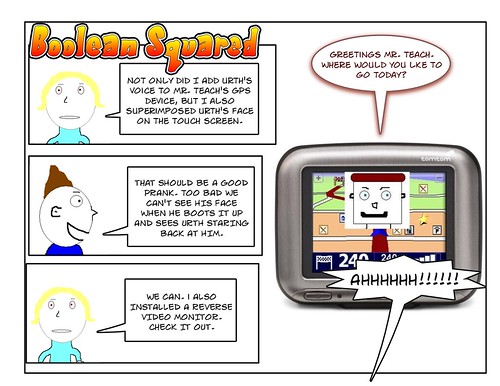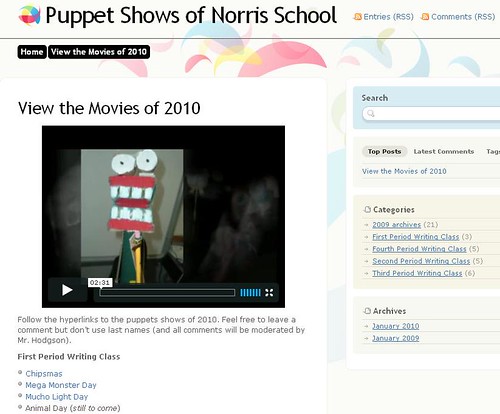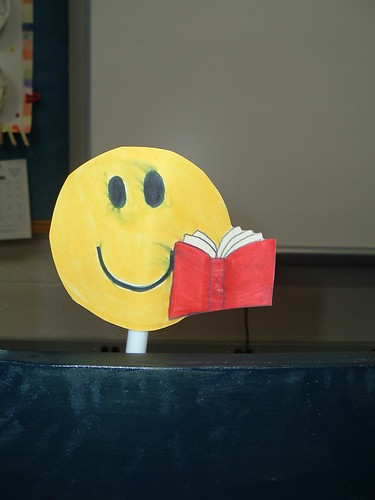On Friday, our school district held a half-day professional development sessions around literacy. This PD continues the work of our Literacy Initiative (still in its first year) and I want to give props to our administration for listening to the feedback from teachers after our Literacy Conference in November in which many of us asked for grade level meetings for sharing out some of our own best practices around literacy. The idea really echoes the philosophy of my National Writing Project, where teachers are at the center of the learning.
I am part of our district’s Literacy Committee (our district is a pretty large geographic area with five elementary schools and then a combined middle/high school — although the ms/hs folks apparently have “opted”out of the Literacy Initiative — which surprised me because I didn’t know staff would have that option …) and so I helped plan the day, and I was asked to co-facilitate the sixth grade teachers’ session with my co-teacher. The district had teachers in grades K-2 in one building in one town and 3-6 in another town because of space issues.
Every group first discussed the Five Components of Reading and how these ideas come together in our teaching practice, no matter what level you are at:
- Phonemic Awareness
- Phonics
- Fluency
- Vocabulary
- Comprehension
We then each had ample time as grade level teachers to share out a lesson plan, an activity, a strategy or maybe some student work. (I brought in ideas around developing rubrics and questions around reading comprehension, for example).
As sixth grade teachers, we focused most on vocabulary and comprehension skills, and it was great just to have space to talk, chat, ask questions and learn ideas from each other. One of the projects we have in mind is to develop a summer reading list for upcoming sixth graders and I am already envisioning using Etherpad among my colleagues for collaborative writing around this idea. If nothing else, the meeting on Friday sparked us all to want to collaborate more on ideas and become more of a community of teachers.
At the end of our grade level sharing, all of the teachers in 3-6 gathered together to share out our points from our discussions, and I was the facilitator of this large group gathering as well.
Here are some things that I saw as themes emerging from the teacher-based discussions:
- Playfulness with words enriches vocabulary instruction for students;
- Reading skills are important beyond the Language Arts class. We must pay attention to reading in the content areas;
- Moving students to think “beyond the text” has been a struggle for many of us (note: I personally think that the use of Accelerated Reader in some of the middle grades of our building is partially to blame and told our principal that after the conference);
- Students benefit from skill of learning common roots, suffixes and prefixes;
- Repetition and Practice in comprehension-style questions are crucial — also, in use of vocabulary;
- Reading aloud, mixed with silent reading, benefits fluency;
- There needs to be even more family support for reading and literacy at home for many of our students;
- The question of how to appropriately reach all learners across the spectrum came up here and there — how to use differentiated instruction;
- and more …
I did notice that much of our whole group discussion focused around vocabulary instruction more than comprehension, and fluency seemed to get very little attention.
I wonder how our colleagues in the K-2 grades did at their session (Gail?). Our administration is supposed to compile all of the general discussions into one file and share with all of the teachers so that we can all see any trends around our literacy instruction and identify possible ideas for improving what we are doing in the classroom.
I hope the focus continues to be on what teachers need and already do around literacy, and not some top-down, canned Literacy Program that dictates what should be taught, when and how. I am hoping that the use of our time on Friday for teacher-led discussions is a good sign of where we are heading right now.
Peace (in the discussions),
Kevin






